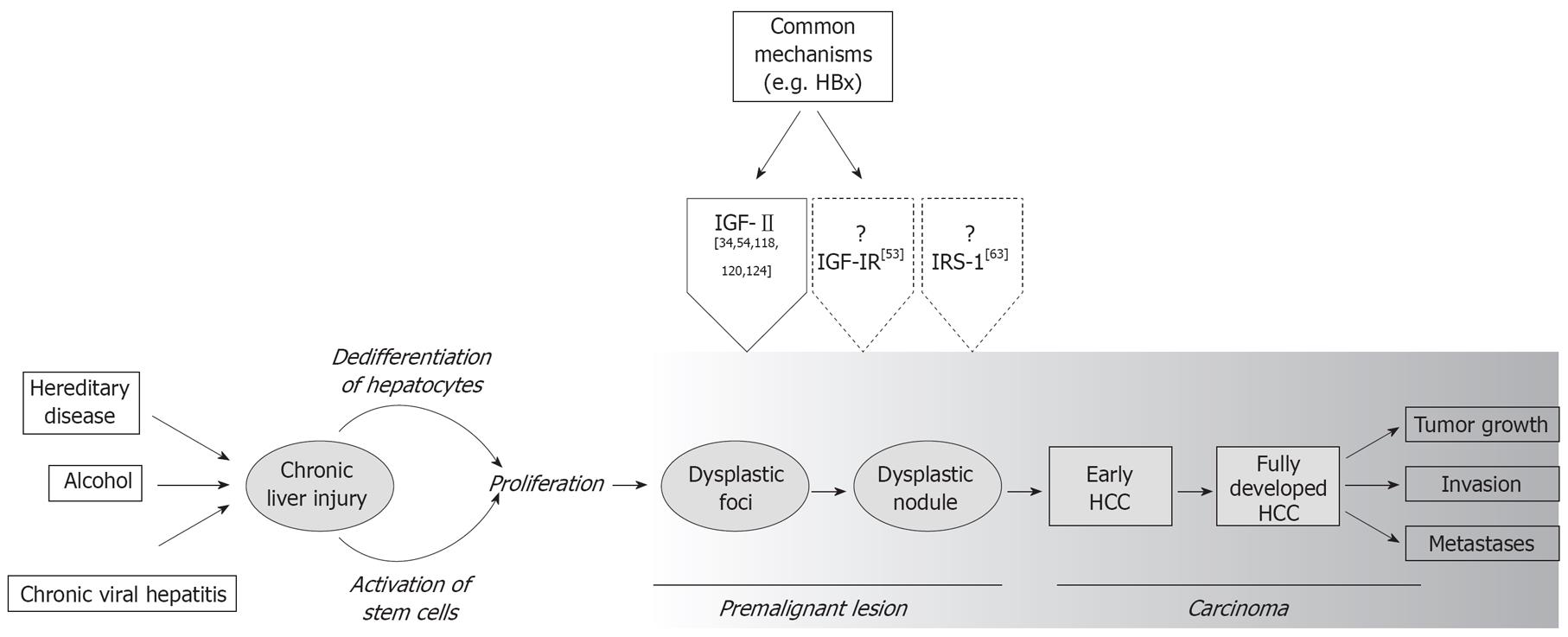Copyright
©2008 The WJG Press and Baishideng.
World J Gastroenterol. Mar 21, 2008; 14(11): 1690-1698
Published online Mar 21, 2008. doi: 10.3748/wjg.14.1690
Published online Mar 21, 2008. doi: 10.3748/wjg.14.1690
Figure 1 Schematic representation of human hepatocarcinogenesis.
Human HCC usually develops on the background of a chronic liver disease (e.g. hepatitis, alcoholic liver disease, hemochromatosis). Dysplastic foci and dysplastic nodules are regarded as premalignant lesions preceding the development of HCC. In addition, “early” HCCs (< 2 cm, highly differentiated, non-invasive) are distinguished from fully developed HCCs (fast growing, invasive). However, human hepatocarcinogenesis represents a developmental continuum where a clear cut classification of a given lesion is often impossible. Increasing evidence suggests that aberrant IGF-II expression represents an early event in hepatocarcinogenesis; however, comparable data are currently not available for IGF-IR, and IRS. Nevertheless, reactivation of the IGF-II/IGF-IR signaling pathway seems to be a progression step in human liver cancer.
- Citation: Breuhahn K, Schirmacher P. Reactivation of the insulin-like growth factor-II signaling pathway in human hepatocellular carcinoma. World J Gastroenterol 2008; 14(11): 1690-1698
- URL: https://www.wjgnet.com/1007-9327/full/v14/i11/1690.htm
- DOI: https://dx.doi.org/10.3748/wjg.14.1690









